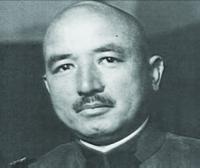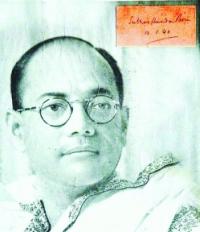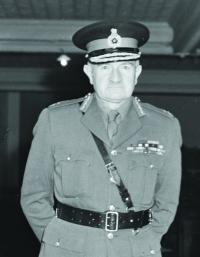THIS MONTH, 70 years ago, the 15th Imperial Japanese Army, under the command of Lt. General Renya Mutaguchi, launched Operation U-GO - the Japanese Invasion of India. General Mutaguchi’s army consisted of the 15th, 31st and 33rd Infantry Divisions, commanded by Masafumi Yamauchi, Kōtoku Satō and Motoso Yanakida, supported by the 1st Division of the Indian National Army, commanded by Mohammed Zaman Kiyani. The Indian National Army fought with the Japanese and was formed to support the Indian independence movement headed by Subhas Chandra Bose.
The 15th and 33rd Infantry Divisions were tasked with capturing Imphal. Today, Imphal has a population of 265,000, is located on a plain, surrounded by jungle-covered mountains and is the capital of the Indian state of Manipur. Manipur is bounded by Burma on the east and the Indian state of Assam on the west.
General Satō’s 31st Infantry Division was ordered to capture Kohima, which would isolate Imphal from its supply source. Kohima was an important link in the road to Dimapur, which was the eastern terminus of the railroad supplying Manipur and the planes flying the “Hump” into China. Today it has a population of 106,000.
General Satō considered his superior, General Mutaguchi, to be a “blockhead” and had little faith in the coming operation, going so far as to tell his staff they might all starve to death, since they were not well provisioned and had no arrangements to receive any. Rather, they were to live off the land and whatever they captured from the British. General Mutaguchi was so confident that Imphal would fall in ten days that he provided his troops with only 20 days’ rations.
The British 14th Army, commanded by Lt. Gen. William Slim, was tasked with defending the Burma/India Border. Imphal was held by the IV Corps, commanded by Lt. Gen. Geoffrey Scoones. Gen. Scoones’ IV Corps consisted of the 17th, 20th and 23rd Indian Infantry Divisions, commanded by Maj. Generals David Tennent Cowan, Douglas Gracey and Ouvry Roberts.
Japanese forces crossed the Chindwin River on March 8, 1944. At that point, the river runs roughly parallel with the Burma/Indian border on the Burma side. After crossing the river, the Japanese then had to cross mountain ranges to the river’s west. Within a few weeks, the Commonwealth forces were falling back to Imphal, as planned. The idea was to make General Satō’s prediction of starving come true, as it would be almost impossible for the Japanese to supply themselves, because of the distance and terrain.
In the meantime, General Slim had sent 12,000 of Ord Wingate’s Long Range Penetration Group - the “Chindits” - into the Burmese jungle, behind Japanese lines. Their mission was to interdict Japanese lines of communication, distract the enemy and generally raise hell and cause confusion in the Japanese rear.
General Satō’s 31st Infantry Division began crossing the Chindwin River on March 15, 1944, headed through the jungle for Kohima, which, at the time, was defended by the Assam Regiment. Meanwhile, the 5th Indian Infantry Division, commanded by Harold R. Briggs, was airlifted into Imphal. This was one of the few Allied divisions to have fought the Italians (in East & North Africa), the Germans (in North Africa) and the Japanese (in Burma & India).
Returning to Imphal in a B-25 Mitchell Bomber, piloted by Lt. Brian Hodges of the USAAF, Chindit leader, Orde Wingate, was killed when the bomber crashed in the mountains near Imphal on March 25. Reflective of the opinion of many was Field Marshal Bernard Law Montgomery’s comment, “... that the best thing he ever did was get killed in a plane crash....”
On April 3, a battalion of The Queen’s Own Royal West Kent Regiment and a battalion from the 7th Rajput Regiment, from Gen. Briggs’ 5th Indian Infantry Division, arrived at Kohima. The Kohima defenders numbered about 1000 effectives and were under the command of former Chindit Colonel Hugh Richards.
General Satō’s men launched their first attack on Kohima on the night of April 4. Kohima was 5000 feet above sea level, surrounded by high jungle-covered mountains. By April 8, the Japanese had surrounded Kohima. Just when it seemed the Japanese would overrun the Commonwealth position, reinforcements arrived on April 16. The next day, General Mutaguchi told General Satō that General Satō’s starving men must take Kohima by April 29 - because that was the Emperor’s birthday!
The siege was broken by the 2nd Infantry Division, commanded by John Grover, on April 18. But that did not mean that 31st Division was leaving. It had been ordered to stay put by General Mutaguchi. Finally, on June 2, defying his superior, General Satō told headquarters that, “Our swords are broken and our arrows gone. Shedding bitter tears, I now leave Kohima.” The 64-day siege of Kohima was over. The Commonwealth had suffered 4000 casualties, while the Japanese lost 7000.
General Mutaguchi visited the front in General Yanakida’s sector, on April 22. He brought with him 20 geisha girls, whom he intended to install at his new headquarters in Imphal. Since his new headquarters were not, immediately, “available,” he dismissed General Yanakida, and replaced him with Maj-Gen. Nobuo Tanaka. On departing, General Yanakida told his successor, “It’s all hopeless.”
In addition to the lack of food, the Japanese suffered other deficiencies. Because General Mutaguchi had ordered them to travel light, they had no heavy artillery, armor or antitank guns with which to counter the Commonwealth artillery and tanks. On top of that, the RAF and USAAF had complete dominance of the air.
Commonwealth soldiers from Imphal met their compatriots from Kohima on the road between the two on June 22.
General Mutaguchi finally conceded failure and, on July 8, ordered his men to retreat back across the Chindwin River. The Japanese losses were devastating. Of the 65,000 soldiers who had crossed the river in March, 50,000 died. Only 600 were taken prisoner. The Japanese also lost 17,000 pack animals, many of which were consumed by the soldiers.
At the Commonwealth Cemetery at Kohima, there is an inscription which reads,
“When You Go Home, Tell Them Of Us And Say, ‘For Your Tomorrow, We Gave Our Today.’”
NEXT: OPERATION MARGARETHE
Mr. Wimbrow writes from Ocean City, Maryland, where he practices law representing those persons accused of criminal and traffic offenses, and those persons who have suffered a personal injury through no fault of their own. Mr. Wimbrow can be contacted at
wimbrowlaw@gmail.com



